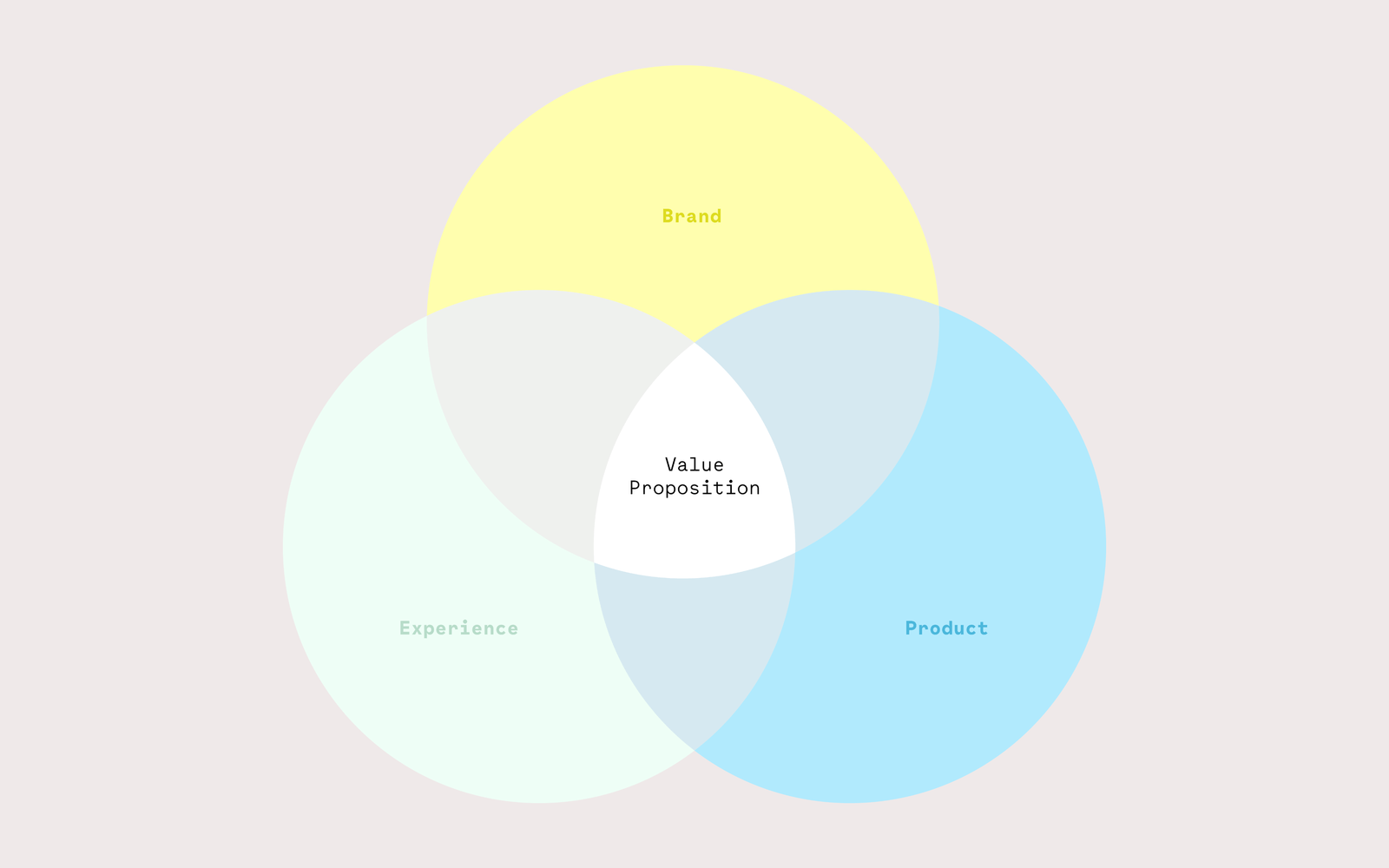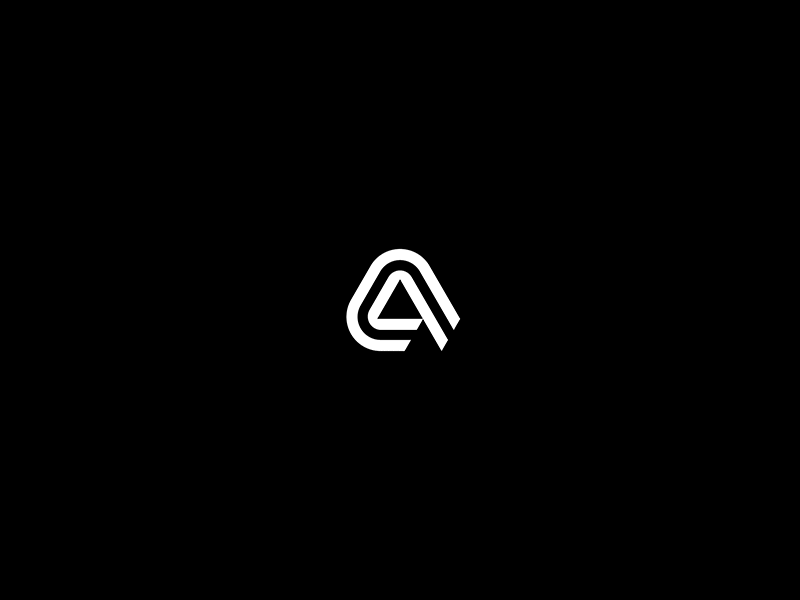As an Experience Designer, I work with tech companies a lot. Their expertise is in building big, technical, complex systems which solve real human problems. What they aren’t always experts at, however, is explaining those solutions in a way that feels human and approachable to the rest of us.
What does it look like?
Well, being an expert in something can often mean becoming blind to how complex it really is. For example, when explaining intermittent fasting to someone unfamiliar with the mechanics of digestion: You could tell them how insulin levels drop, how the body eventually shifts to a state of ketosis and then starts using fatty acids as its primary source of energy instead of glucose, gradually decreasing body fat percentage…
You might be sharing all the necessary relevant information, but you’re using terminology that far fewer people fully understand.
How does it happen?
A biased knowledge
These scenarios can be explained by a cognitive bias called the “curse of knowledge.” This is when you assume that other people know the same things that you do. It also causes you to believe that people understand you a lot better than they really do.
The bubbles we live in often deprive us of the much-needed empathy in our communication. And no wonder; when you’re immersed in the universe of your own product, it’s difficult to remember that the rest of the world hasn’t been on the same journey as you. It’s a purely human trait. However, it’s also where jargon, shorthand and tunnel vision thrives, often only to the detriment of your audience.
So how do you sell a complex idea?
The business of ideas
An idea is just as marketable as any product or service and, if executed properly, can be just as valuable. It’s important to remember that selling an idea is never about you, it’s the people you’re selling it to. As Carmine Gallo, the author of Speak like Ted puts it; You can have a great idea, but if you cannot persuade others then it doesn’t matter. No one will hear you.
Selling something complicated in simple words will require two significant shifts in your mindset. The key is to look at your communications strategically so that your content is relevant to your audience and can resonate with them.
As Bill Skowronski, writer at Sharing the Good, says:
When your content is strategically designed to help customers, it can be search engine optimized to rank when they’re researching and will directly resonate with them. And because the messaging is audience-centric, it stands out in the industry, differentiating your business from every other one that says they do what you do.
Being relevant
Strategies that I use to sell ideas or refine a brand’s messaging are often client–specific; however, these are the two I use most often:
- Asking questions
- Chunking
Asking questions is a great start. Before you write a single word for your webpage or conference, you should ask yourself: Who is my audience? What are their needs and desires? What purpose does this piece of content serve?
It’s a very useful approach, although successful implementation often requires a bit more experience.
Chunking, on the other hand, is a more straightforward process. Barbara Oakley, Professor of Engineering at Oakland University, is probably best known to the broader public through her course “Learning how to learn,” in which she introduces the concept of chunking.

It’s a strategy through which you break down information into bite-sized pieces so that your audience can digest new information more efficiently. The reason the brain needs this assistance is that working memory, which is where we manipulate information, can only hold a limited amount of information at one time.
Chunking method for your brand’s message
Within the communication strategy, chunking helps you create a shorter version of your brand’s message. You strategically simplify your content based on the context, goals and your audience. Basically, it enables you to determine how much to say and when to say it.
To make it more relatable; Let’s say that you’re a crypto startup wanting to validate your business idea. In order to do that you’re creating a simple landing page, with a goal of gathering email addresses for beta testers.
Start from the big picture and highlight your goals and context — In this example, it could be: Validate an idea through a landing page.
1. Determine the hierarchy of your content
How your content will be organized into a logical and progressive order. Start with large chunks of conceptually related content.
In the case of a brand and its touchpoints, the hierarchy will most probably follow this order:
- BRAND = 1. We, 2. Value Proposition, 3. Solutions, 4. Unique Selling Points, 5. Reasons to trust us, …
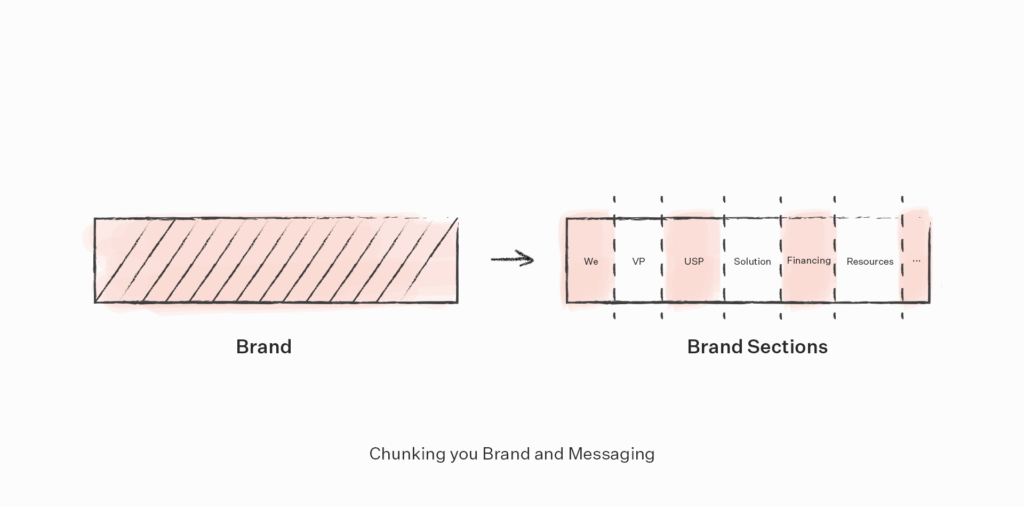
2. List your content
Now you’ll begin to divide the content into a smaller related pieces and match it with your sections.
- BRAND = 1. We (Our Story, Team, Advisors, History,…), 2. Value Proposition (Mission and Vision), 3. Solutions (What we offer, Our product), 4. Unique Selling Points (USP — What makes us unique, Benefits, Specs.), 5. Reasons to trust us (Credentials, Recognition, Expertise), …
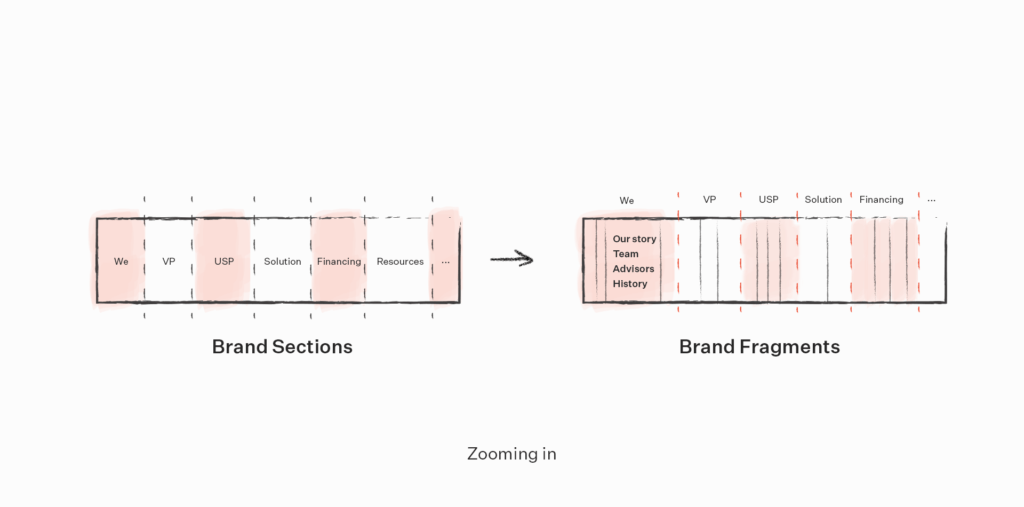
3. Applying your chunks
- Organize and evaluate the content so that each section of your landing page will consist only of chunks of relevant information.
- Now, you’ll begin to fill in your landing page with content. Within our circumstances, a chunk will refer to a short paragraph of text.
- Think about the context and the goals of your landing page: As a crypto startup, you should definitely include a “team” and “advisors” section, as these build trust. However, there’s no need to include the entire history of your team.
- The same goes for the rest of your content — choose top-of-the-list information about your solutions, benefits and about your value proposition.
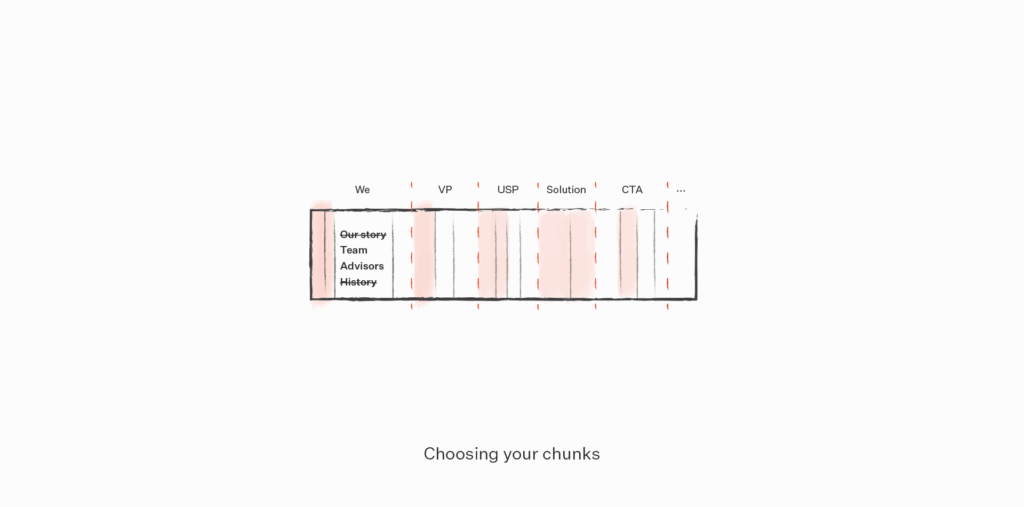
4. Ask: What does my audience need to hear?
- Landing pages are generally one-pagers, so your content area is relatively limited. The best objective to definitively determine what should be included on this page is by asking “What does my audience need to hear”?
- Tell them not only what your product does, but how it can solve their problems. This gives it more value. And remember to get rid of any extraneous content.
Final Notes
To be relevant and to really connect with your audience, you should focus your content on their needs and on solving their challenges. By focusing on your own features, products, and services, you simply won’t make that same connection.
Especially, when your solution is very complicated. The more complicated solution you have the more distant it might feel to the rest of us.
Break your content down into chunks to help keep your audience in mind, to help be more strategic and sell your complex ideas.




